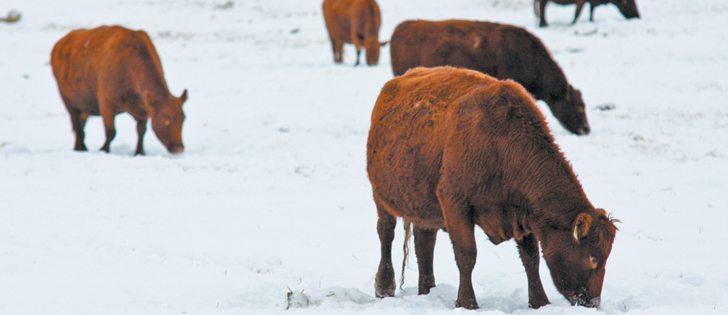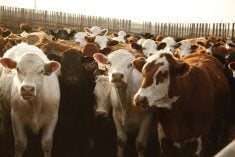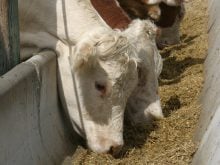Technology DNA testing used for research and genetic improvement also provides forensic assistance
DNA profiling used in cattle research is proving valuable in forensics as well.
A recent incident involving a cattle theft in Saskatchewan showed how genetic fingerprinting can help prove the rightful owner of missing livestock.
Glenn Strube, a livestock producer near Shellbrook, Sask., was able to track down his missing cattle with the help of brand inspectors, the RCMP and a Saskatoon DNA service lab.
Ten of Strube’s heifers disappeared in 2009 and nine were eventually traced to a feedlot in Duck Lake, Sask. DNA testing on the cattle in the feedlot ,as well 23 dames and sires back at Strube’s farm, helped convince a Court of Queens Bench judge that Strube was the rightful owner.
Read Also

Manitoba extends Crown land rent freeze
Manitoba government links the continued rental rate freeze on grazing and forage leases to economic and environmental challenges facing the industry
As a purebred producer, Strube is familiar with taking hair follicle samples from his cattle for DNA testing. He thought the process might work to locate his stolen cattle.
“I’d never heard of this before, but I’m familiar with taking DNA from cattle,” he said.
“When you’re in the purebred business, we’ve done it for many years. Used to be blood, but now with the technology advances, hair is good enough.”
DNA technology has added value as a risk management tool to identify cattle, but that’s not the primary emphasis, said Tom Lynch-Staunton, director of industry relations for Livestock Gentec at the University of Alberta.
“The main focus right now is for parentage, essentially identifying sires, because our industry is a multi-sire pasture scenario so we don’t know which bulls sired which calves,” he said.
“Doing that greatly increases the predictability of your calves’ traits or your bulls’ traits of the traits you want to get portrayed in your cattle. Parentage will greatly increase predictability of those traits in subsequent breeding stock.”
He said it’s a selection tool that helps producers make quicker and smarter decisions that save them money.
“We want to do the whole picture,” he said.
“We don’t want to do one thing like feed efficiency. We’d like to do feed efficiency, health and carcass traits and essentially try to get to the optimal product for everybody.”
He said human research is leading the way, but it is primarily looking at health and diseases to which people may be genetically predisposed.
The emphasis in the livestock industry is on more efficient cattle with improved carcass characteristics and higher quality meat.
“We’re trying to identify traits based on DNA markers that we can theoretically do a DNA profile on an animal and we have a reasonable accuracy that that animal will actually exhibit the trait we’re looking for.”
Lynch-Staunton said genomics technology is just one tool that can be used to speed up genetic improvement in collaboration with DNA tools.
“I don’t think it will be a silver bullet, but I think it will be able to identify those animals that we want to use that much sooner,” he said.
Some breeds are farther ahead in DNA profiling than others because they have more animals that have been tested for certain traits.
“Angus is working on a 50,000 marker profile, where they can attribute DNA markers to traits of interest such as weaning weight, growth, carcass traits, marbling, tenderness, those types of things and essentially add value to their already existing breeding values that they use to select bulls and cows,” Lynch-Staunton said.
















